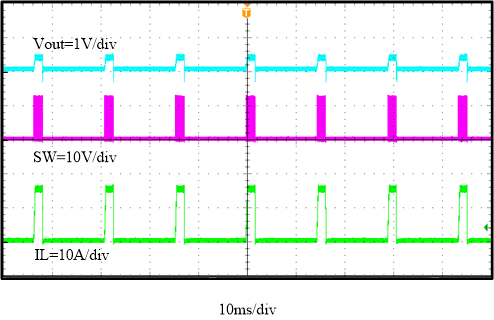SLUSDE4A August 2019 – August 2019 TPS56C230
PRODUCTION DATA.
- 1 Features
- 2 Applications
- 3 Description
- 4 Revision History
- 5 Pin Configuration and Functions
- 6 Specifications
- 7 Detailed Description
- 8 Application and Implementation
- 9 Power Supply Recommendations
- 10Layout
- 11Device and Documentation Support
- 12Mechanical, Packaging, and Orderable Information
8.2.3 Application Curves
Figure 19 through Figure 34 apply to the circuit of Figure 18. VIN = 12 V. TA = 25°C unless otherwise specified.
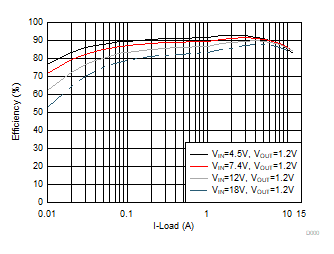
1.
Figure 19. Efficiency Curve 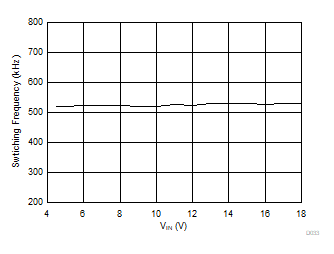
1.
Figure 21. Switching Frequency vs Input Voltage | IOUT = 12 A |
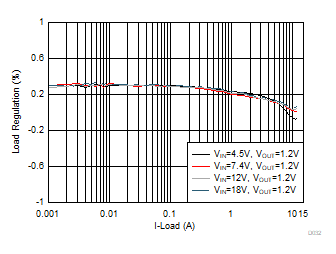
1.
Figure 20. Load Regulation 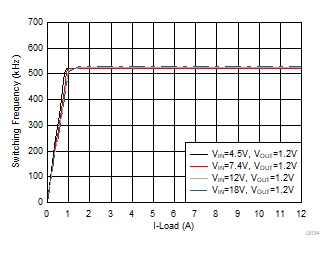
1.
Figure 22. Switching Frequency vs Output Load 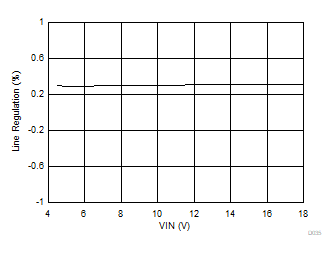
1.
Figure 23. Line Regulation | IOUT=0.1A |
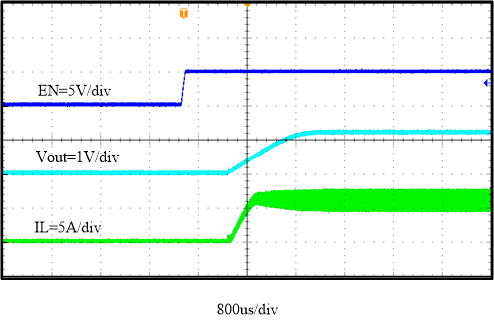
1.
Figure 25. Start-Up Through EN | IOUT = 6A |
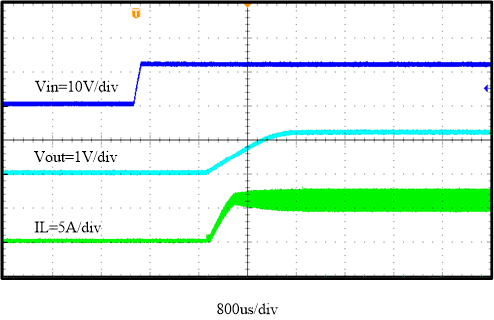
1.
Figure 27. Start Up Relative to VIN Rising | IOUT = 6 A |
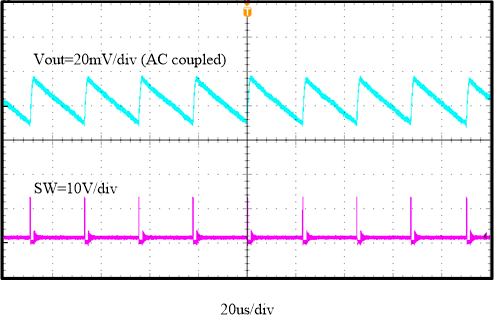
1.
Figure 29. Output Voltage Ripple | IOUT = 0.1 A |
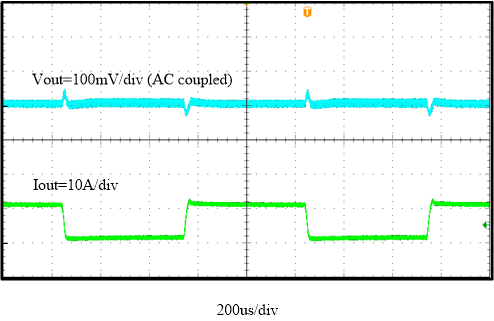
1.
Figure 31. Transient Response | 1.2 A to 10.8 A | Slew Rate=2.5A/us |
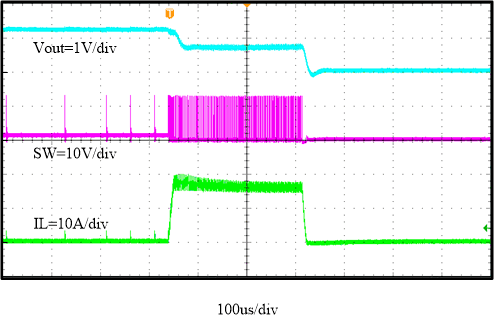
1.
Figure 33. Normal Operation to Output Hard Short 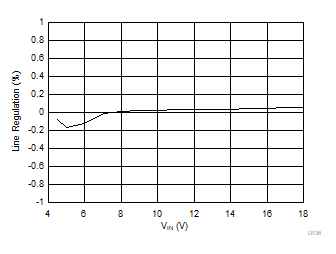
1.
Figure 24. Line Regulation | IOUT=12A |
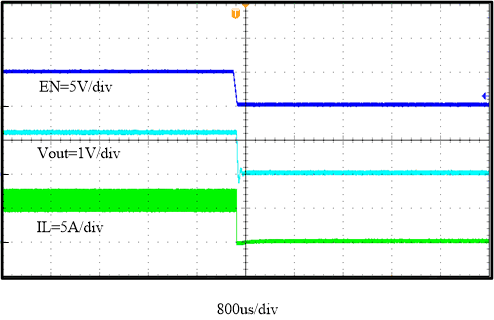
1.
Figure 26. Shut-down Through EN | IOUT = 6A |
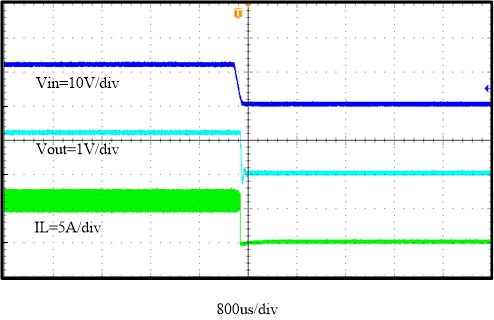
| IOUT = 6 A |
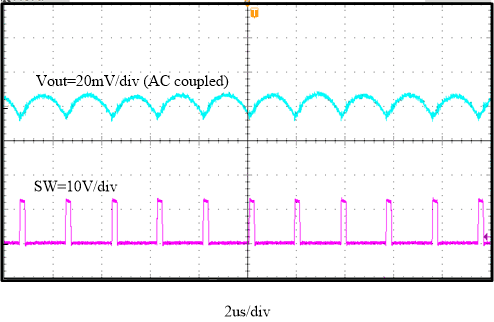
1.
Figure 30. Output Voltage Ripple | IOUT = 12 A |
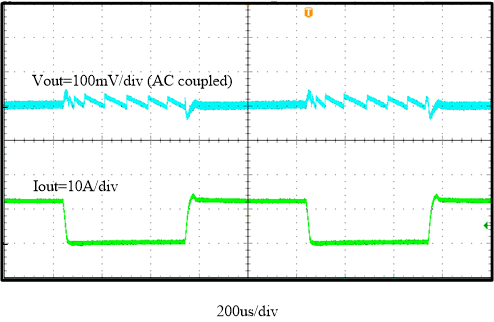
| 0 A to 12 A | Slew Rate=2.5A/us |
